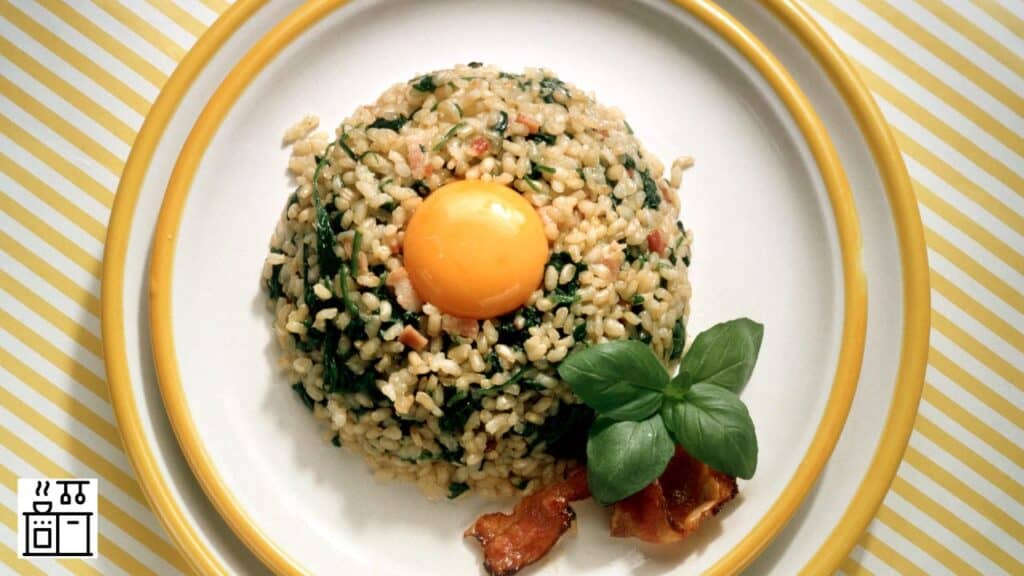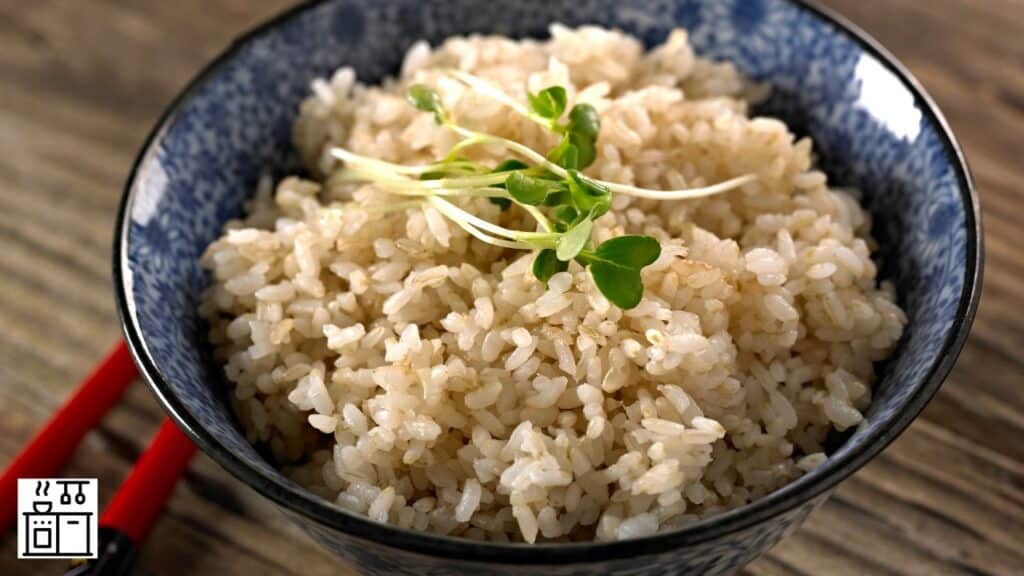Brown rice is healthier than white rice because it carries the bran, which is absent in white rice. However, it is also trickier to cook because the bran is intact.
The good news is that you can cook brown rice perfectly in a rice cooker by taking care of a few factors.
Let’s look at what they are.
Steps to Cook Brown Rice Perfectly in A Rice Cooker
The best thing about cooking brown rice in a rice cooker is that it’s a hands-free method.
Since there are different types of brown rice, you may have to adjust the method and measurements slightly according to the type of rice.
But it’s not too complex.
1. Identify the Type of Brown Rice
There are different varieties of brown rice. While some are long-grain, others are short-grain varieties. Each of them cooks differently.
Long-grain brown rice is less sticky, while shorter one is starchier; hence it sticks more.
It’s important to determine the type of rice grain for accurate rice-to-water measurements.
The accurate measurement will usually be available on the package. But if it’s absent, it will help if you know the variety.
2. Take Accurate Measurements
Accurately measuring the rice and water will ensure that the rice has the right texture after cooking.
For this, you should use the right measuring tools.
You can use any traditional dry scoop for measuring the rice and a liquid measuring tool for the water.
The other option is to weigh the rice and adjust the measurement of water according to the weight of the rice.
For brown rice varieties, 1 cup of brown rice will usually need 2 cups of liquid.
You can use this ratio to scale up or down, depending on how much rice you wish to prepare.
3. Rinse the Rice
It’s important to rinse rice before cooking to clean it as well as get rid of excess starch.
Run rice under normal water and squish and mix the grains around.
The water will turn milky as the excess starch from the grains mixes with it.
As you continue to rinse the grains, the water will become clear.
You may have to rinse the grains two to three times if you use a bowl or container.
To prepare brown rice without rinsing, the starch will make it gummy. It will make the grains clump together during cooking.
Rinsing separates the grains. They will be fluffy and tastier.
4. Add It to The Cooking Pot
The rice cooker will have an inner cooking pot housed inside a casing. After rinsing the rice, spread it on the base of the cooking pot.
Spreading it in this manner will help the rice cook evenly.
Measure the correct amount of water and add it to the cooker.
Depending on the package instructions, you will need 1.5 to 2 cups of liquid per cup of rice.
There is a “Max” line inside the cooking pot of the rice cooker. The liquid level should not exceed this line.
Keep this in mind to decide how much rice to add to the rice cooker.
Overfilling the rice cooker will make water leak from it when it boils. This can make it difficult to clean.
The rice may also end up with an unattractive texture due to this.
So if you must cook a large batch of rice, do it in batches.
This will help you avoid overloading the cooker, and each batch of rice will have the right texture.
5. Season It if Required

Adding salt to rice is optional. But if you prefer to add it, you should do so at this stage.
A good ratio is half a teaspoon of salt per cup of rice. It will season the rice and make it just salty enough when served.
You can also add other seasonings instead of salt. Some options are whole spices like cinnamon or bay leaves.
You can also season it with olive oil or butter to prevent the grains from sticking.
6. Turn the Cooker On
Once you add the rice, water, and salt, close the lid of the rice cooker. Switch it on. Some rice cookers have a special setting for brown rice.
Use this function if it’s present. However, if your cooker doesn’t have this function, choose the regular rice setting.
Once the rice starts cooking, it will absorb water and expand. The rice cooker will automatically detect when all the moisture is absorbed.
It will automatically turn off or switch to “Keep Warm” when the rice fully absorbs all the moisture. You don’t have to check it in between.
The time required for cooking will depend on various factors, like the type of rice and the rice cooker model.
In most cases, the rice should be ready in 45 minutes or less.
7. Let the Rice Rest
Once the rice cooker finishes cooking, it shuts down or switches to “Keep Warm” mode. Don’t open the lid immediately at this stage.
Let the rice rest for some time. Waiting for a short time will allow the rice to absorb any excess moisture.
It will prevent it from becoming dry or crunchy.
You can wait for ten minutes after cooking to open the lid of the rice cooker.
Though this step isn’t compulsory, it will improve the texture of the rice drastically. So we recommend this extra step.
8. Fluff the Rice
When you cook rice in a rice cooker, there is no need to check on it in between.
Since there is no stirring involved, the rice grains can become sticky. Some of the grains may attach to the sides of the cooker as well.
Use a spoon or fork to gently turn the rice over once you open the lid. Gently break any clumps of rice to help the grains separate.
The best way to complete this task is using a fork. Breaking up the clumps will help the steam escape and the grains separate.
However, use only wooden or silicone utensils to remove any rice that sticks to the sides of the rice cooker.
Since the insides are coated with a non-stick coating, metal utensils can scratch and tear these surfaces.
Once the rice is separated and fluffed up, it’s ready to serve and enjoy.
9. Consume It Quickly
Rice spoils rapidly at room temperature. Cooked rice is a breeding ground for microbes like bacteria.
So it’s important to consume it within a few hours. Waiting for too long will promote bacterial growth, making it unsafe to eat.
Use rice from the rice cooker within one or two hours of cooking.
If you can’t consume it immediately, engage the Keep Warm function on the rice cooker.
This will help the rice remain at an elevated temperature and prevent bacterial growth.
Alternatively, you can also wait till the rice reaches room temperature and quickly refrigerate it.
This will prevent microbial action from spoiling the rice. You can store and reuse rice from the refrigerator in 3 days or less.
Reheat it in the microwave or steam it before using rice that was stored in the fridge.

